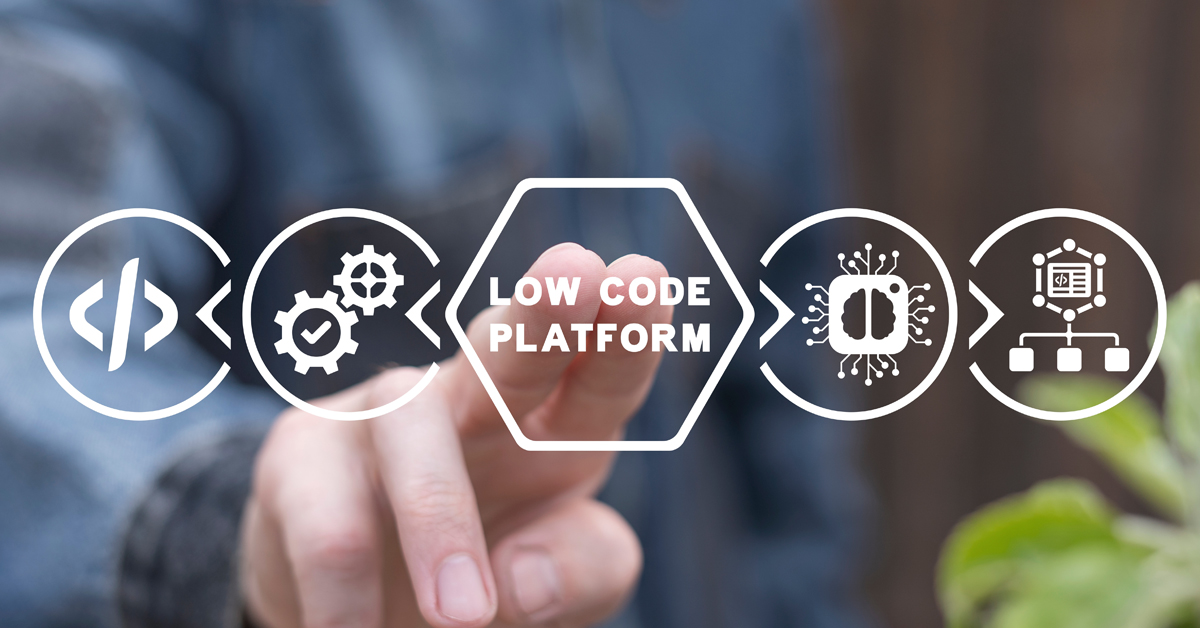A New Era in Customer Experience
Imagine delivering a banking experience tailored to each customer’s unique financial goals and behaviors. In today’s digital-first world, customers expect seamless, highly personalized interactions at every touchpoint. Yet, many banks struggle to provide real-time, hyper-personalized experiences at scale. According to the J.D. Power 2024 U.S. Retail Banking Satisfaction study, 13% of customers say they are likely to switch banks in one year due to poor service and experiences. By offering relevant and attractive product recommendations, banks can improve customer retention and reduce churn rates.
This is where Generative AI (GenAI) in banking comes in. It understands each customer’s needs, behavior, and intent to uncover revenue opportunities to drive growth.
GenAI allows banks to process and act on complex customer data in real time. The outcome: interactions that are contextually relevant, adaptive, and precise. Banks that embrace this capability can strengthen customer loyalty, uncover new revenue opportunities, and gain a competitive advantage in an increasingly dynamic financial services market.
The scale of opportunity is significant. According to EY, GenAI could generate $200–$400 billion in value for the banking sector by 2030, highlighting the tangible business potential of hyper-personalization. To understand how banks can turn this potential into reality, let’s explore how GenAI drives hyper-personalization across the entire customer journey, from insights and predictive modeling to dynamically tailored financial products.
What is Hyper-personalization in Banking?
Hyper-personalization in banking is the practice of delivering highly tailored financial experiences to individual customers by leveraging real-time insights from their behavior, preferences, and financial context. Unlike traditional personalization, which relies on static segmentation, such as demographics or broad product categories, hyper-personalization dynamically adapts interactions to each customer’s unique profile.
Banking-specific examples include:
- Tailored loan or credit card offers based on transaction patterns and credit behavior
- Dynamic interest rates or rewards programs calibrated to account activity and engagement
- Personalized investment or savings guidance anticipating upcoming life events or financial goals
The business impact is clear for banks: hyper-personalization strengthens customer engagement, improves cross-sell and conversion rates, reduces churn, and differentiates banks in an increasingly crowded digital financial services market. By delivering relevant, timely, and actionable experiences, banks can move from transactional relationships to strategic, trust-based customer partnerships.
The Role of GenAI in Delivering Hyper-personalization
Deloitte reports that financial services organizations with high confidence in their GenAI expertise also report greater rewards from their initiatives. This highlights the importance of building internal capabilities alongside technological adoption.
1. Generating Data-driven Insights
GenAI processes vast amounts of structured and unstructured data, including transactions, spending behavior, and engagement signals. Advanced analytics transform these inputs into actionable insights, enabling real-time, context-sensitive recommendations. For example, an investor with a history in technology equities can receive instant suggestions aligned with market trends and personal risk tolerance.
2. Mapping the Customer Journey
By leveraging predictive modeling, GenAI anticipates customer needs across the lifecycle. Banks can deliver timely nudges or offers at critical touchpoints, improving conversion while fostering long-term engagement. For instance, a savings milestone can trigger personalized guidance on investment or credit products.
3. Dynamic Product Customization
GenAI allows institutions to tailor financial products to individual customer profiles. Examples include:
- Personalized loan structures based on income, behavior, and credit history
- AI-optimized investment portfolios aligned with risk appetite and goals
- Customized insurance solutions reflecting lifestyle, health, and coverage needs
This level of customization transforms products from static offerings into adaptive solutions that meet customers where they are.
Benefits of Hyper-personalization for Banks and Customers
For Banks
- Enhanced Operational Efficiency: By leveraging advanced analytics and real-time insights, banks can automate routine interventions, reduce manual workload, and optimize resource allocation. Predictive models allow targeted campaigns, personalized offers, and proactive risk management, freeing staff to focus on high-value strategic initiatives.
- Deeper Customer Intelligence: Hyper-personalization provides a granular view of customer behaviors, preferences, and financial patterns. This intelligence enables banks to make informed strategic decisions, ranging from product development and cross-selling to portfolio risk management, grounded in actionable insights rather than assumptions.
- Stronger Brand Loyalty and Differentiation: Customers today evaluate banks not just by products, but by the relevance and timeliness of their interactions. Delivering highly tailored, seamless experiences reinforces trust, strengthens loyalty, and positions banks as forward-thinking, customer-centric organizations in a highly competitive market.
For Customers
- Contextually Relevant, Frictionless Experiences: Customers benefit from services that anticipate their needs, offering the right solutions at the right moment. Whether it’s a tailored loan offer, a personalized savings recommendation, or dynamic rewards, every interaction feels purposeful and intuitive.
- Personalized Financial Guidance: Hyper-personalization enables banks to provide proactive, goal-oriented advice, helping customers plan for milestones such as education, retirement, or wealth growth. Customers gain actionable insights that are aligned with their unique financial profiles.
- Empowered Decision-making: By providing real-time, individualized recommendations, banks enable customers to make better-informed financial decisions. This empowerment fosters confidence, reduces friction in financial planning, and enhances overall satisfaction with the banking experience.
Challenges and Considerations in Hyper-personalized Banking
Hyper-personalization promises significant value, but implementing it effectively requires navigating a complex set of responsibilities:
- Data Privacy and Ethical Use: Banks handle vast amounts of sensitive customer information. Every transaction, interaction, and behavioral insight must be processed responsibly, with strict adherence to ethical guidelines. Mismanagement can erode trust and invite regulatory penalties.
- Regulatory Compliance: Financial institutions must ensure that personalization systems comply with GDPR, CCPA, and sector-specific regulations. Compliance should be embedded in data collection, storage, and processing workflows, not retrofitted after deployment.
- Algorithmic Fairness and Bias Mitigation: Personalization models can unintentionally perpetuate biases present in historical data. Continuous evaluation, bias testing, and fairness audits are essential to ensure equitable outcomes across demographics and customer segments.
- System Integration and Operational Complexity: Hyper-personalization relies on real-time access to multiple data sources, legacy systems, and third-party platforms. Seamless integration without disrupting operations is critical.
- Transparency and Accountability: Every personalized recommendation or offer must be traceable. Clear decision paths, audit trails, and human oversight mechanisms are necessary to maintain accountability and regulatory trust.
In essence, successful hyper-personalization is not just about relevance, it’s about doing it responsibly. Banks that balance innovation with governance, transparency, and ethical oversight can achieve both customer delight and sustainable growth.
The Path Forward: GenAI and the Future of Banking
BCG notes that GenAI adoption is rapidly increasing, spanning client-facing roles to back-end operations. Integrating these capabilities into existing frameworks is critical to realizing its full potential across the enterprise.
Looking ahead, hyper-personalization will converge with conversational AI, voice banking, and financial wellness tools. Banks will increasingly offer fully adaptive digital experiences, where interactions are context-aware and continuously optimized.
The future is a fully personalized digital banking ecosystem, where each customer receives services tailored to their profile, behavior, and financial objectives in real time.
How Newgen is Transforming Hyper-personalization in Banking?
Newgen’s GenAI-enabled Growth Intelligence Platform, LumYn, equips banks to deliver truly hyper-personalized experiences at scale. By analyzing transactional data, behavioral patterns, and customer preferences, LumYn generates actionable insights that inform tailored product recommendations, dynamic offers, and predictive financial guidance.
Core highlights of NewgenONE LumYn include:
- Conversational AI: Engage directly with your data in plain language to uncover insights, refine strategies, and accelerate decision-making.
- Faster and Simplified Development: Tackle unique business challenges with customizable AI models, supported by Newgen’s low-code-driven platform that enables quick iteration and refinement on the go.
- Accelerated Time-to-market: Access a rich library of pre-built AI models, enabling outcomes from day one and giving banks a competitive edge.
- Data-driven Business Insights: Integrate LumYn’s predictive outputs into decision-making processes to optimize performance and customer engagement.
- Trusted, Reliable, and Secure AI: Built with transparency, visibility, and strict adherence to privacy and security principles, ensuring compliance with banking regulations.
- Flexible Deployment: Available in both on-premise and subscription-based models, LumYn adapts to the infrastructure and business requirements of modern banks.
GenAI-driven capabilities purpose-built for banking include:
- Hyper-personalization powered by a Customer Behavioral Cloud with 30+ pre-built ML models.
- A low-code data science platform that is scalable, flexible, and adaptive.
- Seamless integration of transactional and demographic data into a visually repeatable modeling engine for continuous refinement.
This platform also integrates seamlessly into existing banking workflows. Its conversational GenAI interface enables front-line staff to access contextual insights in real time, facilitating informed decisions and timely interventions. This ensures customers receive relevant services exactly when they need them.
Beyond personalization, Newgen emphasizes trust, security, and compliance. Built-in governance frameworks, audit trails, and data protection mechanisms ensure that AI-driven insights are both actionable and responsible. Combining operational efficiency with customer-centric intelligence, LumYn helps banks enhance engagement, drive revenue, and strengthen brand loyalty.
Conclusion: From Insight to Action
Generative AI is redefining the rules of engagement in banking. Hyper-personalization unlocks tangible value for both banks and customers. Institutions that adopt GenAI strategically, with attention to ethics, compliance, and transparency, will differentiate themselves in the marketplace.
Next Steps: Banks should invest in scalable, responsible AI solutions today to:
- Transform customer journeys through hyper-personalized interactions
- Drive operational efficiency and revenue growth
- Build trust and loyalty in a rapidly evolving digital landscape
FAQS
Q.1. How is hyper-personalization different from traditional personalization in banking?
Traditional personalization relies on broad customer segments. Hyper-personalization, powered by AI, analyzes individual behavior, demographics, and transaction patterns to deliver tailored offers and services to each customer in real time.
Q.2. How is Newgen transforming hyper-personalized banking with AI?
Newgen’s Growth Intelligence Platform, LumYn, brings four core capabilities to enable banks with hyper-personalization:
- Converse with Your Data: AI-driven insights from natural language queries.
- Segmentation of One: Personalized offers based on unique behavioral and demographic profiles.
- Cross-sell & Up-sell: Intelligent recommendations aligned with customer context.
- Low-code AI Platform: Rapid model building and deployment tailored to banking ecosystems.
Q.3. How does GenAI enable hyper-personalization?
GenAI processes vast amounts of customer data, transactions, behavioral patterns, and contextual triggers, to deliver real-time, personalized experiences. Newgen extends this capability with its low-code AI platform, allowing banks to build and deploy custom AI models for dynamic product recommendations, personalized nudges, and AI-powered financial advice.
Q.4. How does GenAI support financial advisors in banks?
GenAI provides real-time insights and contextual nudges to relationship managers, enabling smarter customer conversations. Newgen empowers advisors with AI-driven data insights, accessible via natural language queries, so they can deliver faster, more personalized recommendations.
You might be interested in

20 Nov, 2025
How Low-code Platforms Are Redefining Financial Services Software Development

20 Nov, 2025
Claims Management Software Evaluation: What CIOs and COOs Must Know Before Investing

20 Nov, 2025
Customer Communication Management (CCM): The Complete Enterprise Strategy Guide

